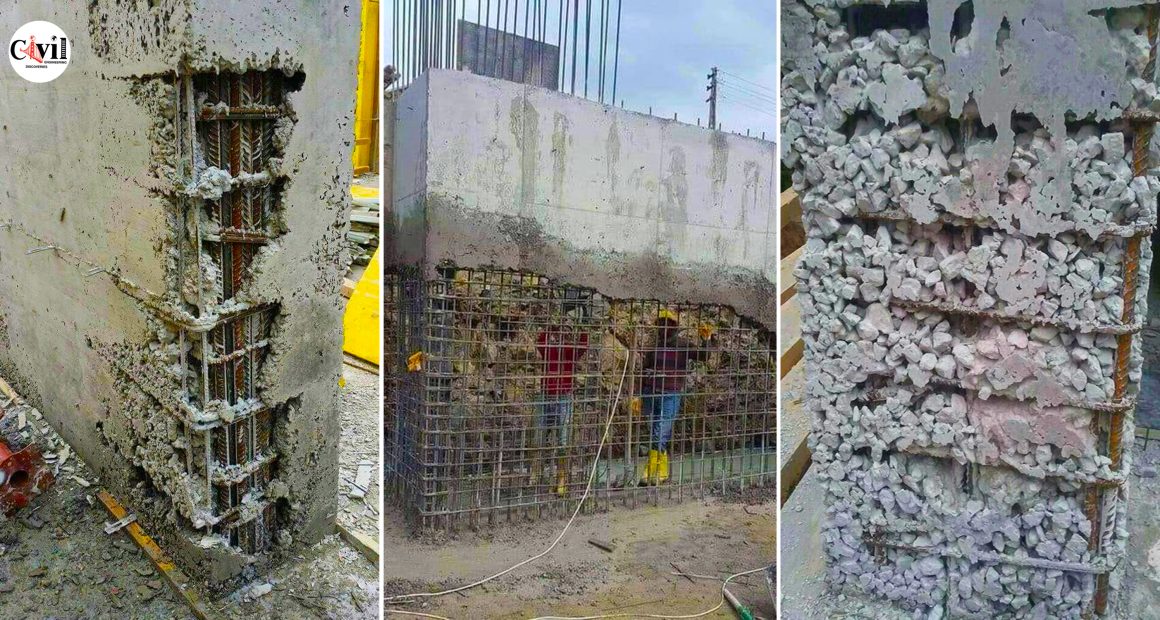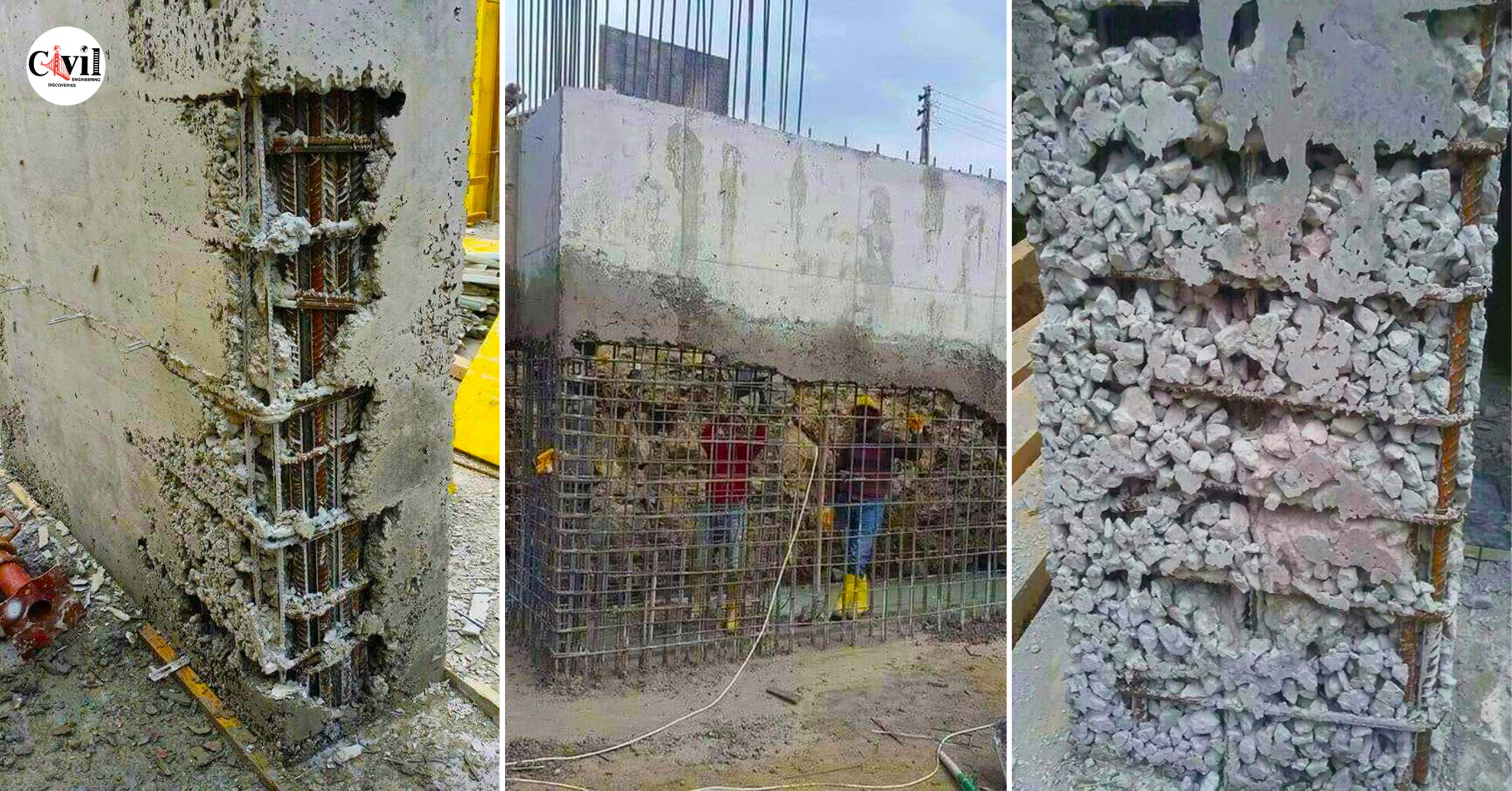Segregation of concrete is a significant concern in the construction industry as it can weaken the concrete, causing cracks, reduced load-bearing capacity, and structural failure. This blog delves into the causes of segregation, its effects, and the importance of preventing it. We provide practical tips on how to prevent segregation through proper proportioning, mixing, handling, vibration, and placement techniques. Read on to learn how to ensure the quality, durability, and safety of your structures and infrastructures by preventing segregation in concrete.
What is segregation in concrete?
Segregation of concrete refers to the separation of the constituent materials in freshly mixed concrete. This occurs when the heavier aggregates settle down due to gravity, leaving behind the lighter cement and water mixture on top. Segregation can also occur when the concrete mixture is not properly mixed or higher water-cement ratio causing some areas to have more cement or water than others.
Types of Segregation in Concrete
There are two primary types of segregation that can occur in concrete:
1. Segregation due to the separation of aggregates:
- This occurs when the heavier aggregates in the concrete mixture settle and separate from the cement and water mixture, causing the mixture to become non-uniform. The separation can happen during transportation or the pouring of the concrete.
2. Segregation due to separation of cement slurry:
- This type of segregation occurs when the water and cement separate due to an uneven distribution of the mixture. This can be caused by the use of inappropriate mixers, insufficient mixing time, or improper water-cement ratio.
Concrete segregation causes
There are several causes and factors affecting the segregation of concrete.
1. Uneven proportion of concrete ingredients
If the proportion of the constituent materials in the concrete mix is not uniform, it can lead to segregation. A high water-cement ratio can cause the aggregates to settle to the bottom due to the excess weight of the water.
2. Insufficient mixing time of concrete
If the concrete is not mixed thoroughly, some areas of the mix may have more or less certain ingredients, leading to segregation.
3. Handling of concrete mix
Improper handling of the concrete mix can also cause segregation. If you mix concrete manually, there may be inconsistencies in the mixing process, leading to segregation.
4. Placing of concrete mix
Concrete transportation can be a huge contributor to the segregation of concrete. The way in which the concrete is placed is crucial. If the concrete is poured from a height or if it is transported long distances, it can cause the heavier aggregates to settle and separate from the rest of the mix.
5. Vibration of concrete
While vibration is commonly used to consolidate and remove air pockets from the concrete, excessive vibration can cause segregation by causing the aggregates to settle and separate from the rest of the mix.
Effects of segregation on concrete
Segregation in concrete can have several effects, including:
1. Increased susceptibility to leakage, corrosion, and carbonation
When the concrete mixture segregates, it can result in the formation of voids, which can increase the permeability of the concrete. This can make the concrete more susceptible to water penetration, which can lead to corrosion of the reinforcement and carbonation of the cement.
2. Formation of cracks in concrete:
Segregation can also lead to the formation of cracks in the concrete, which can significantly reduce the durability and lifespan of the structure. These cracks can occur due to the uneven distribution of the aggregates and can result in a weaker and less stable structure.
3. Reduced strength of concrete
Segregation can also lead to the formation of weak areas in the concrete, resulting in reduced overall strength. The areas where the aggregates have settled may have a higher concentration of cement and water, resulting in a weaker concrete mixture. This can also result in a lower load-bearing capacity of the structure.
Overall, segregation can have severe consequences for the structural integrity of the concrete, making it essential to prevent segregation during the mixing, transportation, and placement of the concrete mix.
How to prevent the segregation of concrete?
There are a few ways to prevent segregation in concrete. By following these steps, segregation in concrete can be prevented, ensuring that the final product is of high quality, durable, and long-lasting.
- The proportion of aggregates, cement, water, and other admixtures should be accurate and uniform. The water-cement ratio should be appropriate for the type of concrete being mixed.
- The concrete should be mixed thoroughly to ensure that all the ingredients are uniformly distributed. Adequate mixing time and appropriate equipment should be used.
- The concrete should be handled carefully during transportation and placement to prevent segregation. The use of appropriate handling equipment and avoiding manual mixing can help prevent segregation.
- Vibration is an essential step in concrete placement, and it helps to consolidate the concrete and remove any trapped air. Adequate vibration can also help to prevent segregation by ensuring that the concrete is uniformly distributed throughout the formwork.
- The concrete should be poured carefully to prevent the formation of voids, which can lead to segregation. Concrete should be placed in layers, and each layer should be adequately compacted.
Click Here To See Workability Of Concrete And Quality Control

































